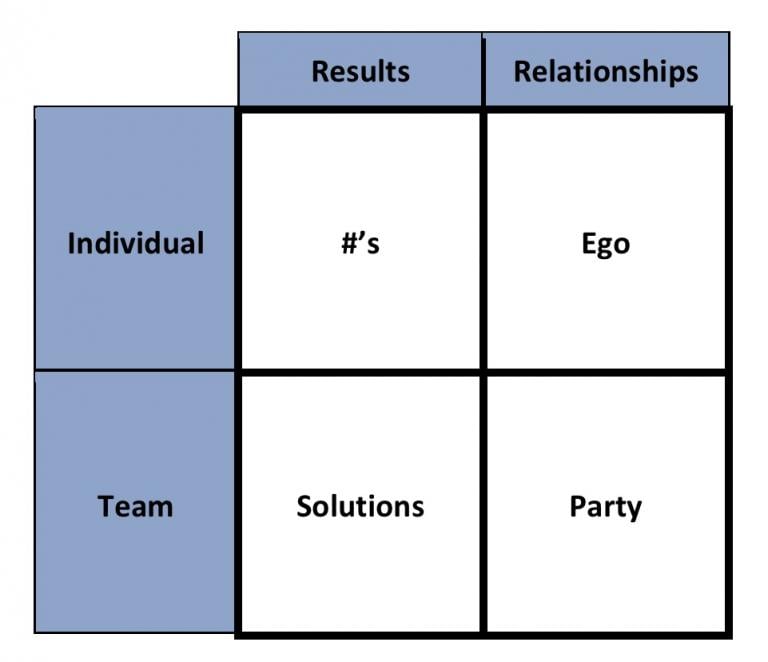Checkers or Chess?
This is part two of our Leading Up series, where we uncover the secrets to influencing your boss so you can find greater effectiveness and joy at work.
A summary of our first post: Your boss (or bosses) are in charge. This is reality. Face this truth, so you can learn to master it.
In both this article and the following, we’ll do a deep dive into the motivational profiles of four different types of bosses.
Before that, let’s ask a mindset question:
Do you approach your boss in a checkers mindset or a chess mindset?
In checkers, every piece is the same; every piece follows the same rules for movement. It is straightforward and does not require much adjustment.
In chess, there are six different types of pieces, each with their own rules for movement, their specific strategies for attacking the opponent, and their unique vulnerabilities.
If you have a checkers mindset at work, you treat every person the same. (Most likely you treat them as if they were like you.) You most likely relate to your current boss the way you did to your last boss and perhaps like other significant authority figures in your life.
If you have a chess mindset at work, you recognize that there are different types of people, with different motives and personalities. And most importantly, you realize you need to have a customized strategy that aligns with their uniqueness.
If you’ve made it this far in this post, it is time for chess lessons!
The Boss Matrix and Winning with Your Higher-Ups
VOCA’s Boss Matrix:
The boss-matrix reveals four different motivational patterns for bosses as defined by where they land on two different axes of orientation. Is your boss an individual worker or more team-oriented? Is he/she more results-driven or relationship-driven?
In this post, we look at two kinds of bosses who frame work as individual contributors. They look at work as something they do on their own. You don’t work with these bosses you work for them.
As individual players in the work-space, some bosses are more results-oriented and others are more relationship-oriented.
Show me the Numbers Boss: Individualistic, results-oriented bosses love numbers. Numbers that represent you producing results, more and more results over time. They want to know that your output is up and to the right; that your productivity this year is better than last year. These bosses want to see you put numbers on the board: items sold, clients served, services delivered, etc. And the one subject that gets their interest more than any other is how your numbers are doing. They ask: “Is your department growing?” and “What is in your pipeline?” They practically foam at the mouth when you mention big opportunities for more numbers.
Cardinal Sin: Like all the other bosses, numbers bosses have a cardinal sin, a rule, that if broken, will unleash their wrath and get you killed (or at least sent away to the work equivalent of exile). Not making your numbers is the painfully obvious way to lose with this type of boss. Promising big results and then not delivering will make it even worse.
Sweet spot: The sweet spot and success zone with these bosses is exceeding estimates. If you have a numbers boss, make sure you under-promise and over-deliver. Be subtle about this, not excessive. Do not publicly estimate that you’ll do $10,000 and then produce $150,000 worth of result, because it indicates that you have terrible estimating skills. Most jobs oriented by numbers have a minimum expectation for production. Know what they are! Share your sales or output estimates at the bottom of the range, towards the minimum required. Then go from there.
Practice: Surviving and thriving in a workplace led by a numbers–driven boss means discerning how to put numbers on the board without selling your soul. You can learn how to sell, persuade, and process cases, clients, or tasks efficiently and accurately. Identify the people in your company who are already doing well. Learn everything you can from them. If no one in your department or division is hitting the numbers, find people who produce well at other companies or similar industries. Find the best practices and implement them.
Secrets: Sometimes numbers-driven bosses talk big, but then accept a lower percentage of goal numbers (I’ve seen 50%). It can be likened to the cushion highway patrol officers give drivers around the speed limit. They will never admit this, but you can come up with an accurate estimate if you watch and listen carefully.
Also, some bosses, particularly those who were ultra-productive, are impossible to work for. They have failed to understand their own success, so they are unable to train others. If you have one of these, keep working your current job while you look for a new one.
It Really Is All About Me (Not you!), The Ego-Driven Boss: Individually-oriented, relationally-motivated bosses net out to the ego-driven boss. When you boil it all down, this boss wants to look good in front of others. They want to be the smartest, the hippest, the most admired person in the room. This type of boss is very conscious of their brand equity and is constantly fussing about how results and behaviors will “appear.”
How to lead up with an ego-driven boss.
Cardinal Sin: based on the above description, any action or comment that would diminish the reputation and standing of your boss constitutes the kind of cardinal sin that will spark his/her anger and ultimately result in a change of fortune for you in a negative direction. Verbal disparaging the boss both in front of others, or behind his/her back, failing to deliver results that will diminish his/her credibility with power players – all of these are examples of cardinal sins in the eyes of the ego-driven boss.
Sweet Spot and Best Practice are the same in this case. It is a two-step process: 1) Find things about your boss, which you can authentically celebrate or praise. This may be like searching for buried treasure without a map, but once you apply yourself, you’ll be able to find some good in your supervisor. 2) Find non-patronizing ways to share those compliments.
The sweet spot is staying in the “fan of the boss” category. The practice is finding noteworthy achievements and qualities and sharing compliments in that regard as appropriate.
Secret: Ego-driven bosses are perhaps the most difficult to work for because their primary drive is their own image improvement, not job-related outcomes or deliverables. The best strategy may be to avoid working for one. So how do you avoid this hazard?
Listen carefully. Even in an interview, ego-driven bosses will spend more time touting their individual accomplishments and the people they know and less time listening to you, the interviewee. Ego-driven bosses find it “nails on the chalkboard” hard to share credit or celebrate the victories of others. Listen for it and avoid it.
How About You?
- If you are a boss or become one someday, which of these types best describes you and why?
- Which of these categories best describes your current boss?
- Jesus said to be as wise as serpents and as gentle as doves, how does this apply to the way you relate to your boss?
- Based on the approaches espoused in this post, what have you been doing wrong, what have the consequences been, and what will you do differently tomorrow?
Dr. Chip Roper writes Marketplace Faith from New York City, where he is the Founder and President of the VOCA Center. Under Chip’s leadership, VOCA rescues clients like you from the forces that rob them of effectiveness and joy at work. VOCA provides coaching, training, and consulting to individuals and organizations in NYC and beyond. Visit our faith-based website at vocacenter.org and our market-facing menu of services at www.vocacenter.com.













